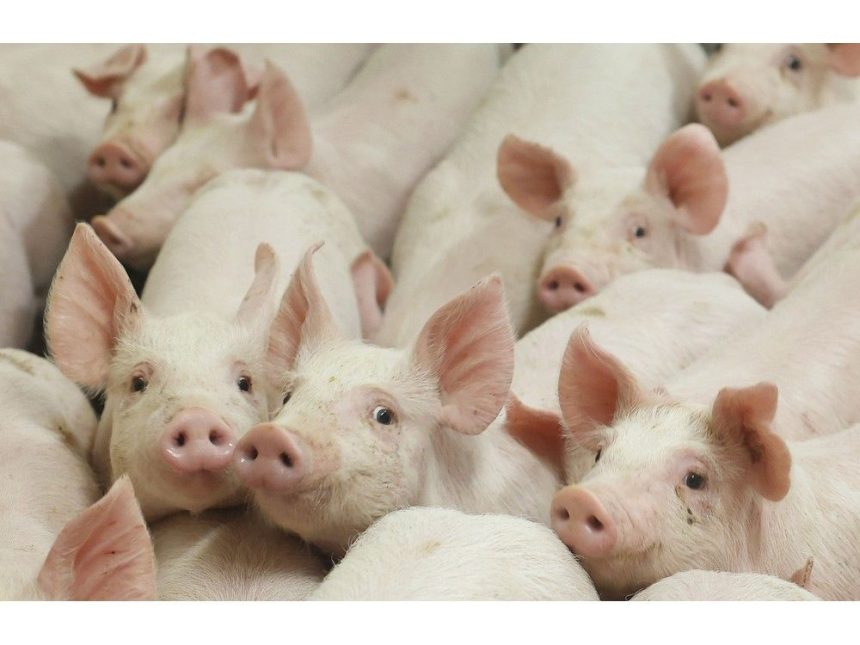Canada imported more than US$850-million worth of U.S. pork last year, according to the National Pork Producers Council. Photo by Tony Caldwell /PostmediaArticle contentIn April, the U.S. Food and Drug Administration approved the commercial distribution of pigs genetically edited with CRISPR technology to resist porcine reproductive and respiratory syndrome (PRRS), a costly and widespread disease in pork production.THIS CONTENT IS RESERVED FOR SUBSCRIBERS ONLY.Subscribe now to access this story and more:Unlimited access to the website and appExclusive access to premium content, newsletters and podcastsFull access to the e-Edition app, an electronic replica of the print edition that you can share, download and comment onEnjoy insights and behind-the-scenes analysis from our award-winning journalistsSupport local journalists and the next generation of journalistsSUBSCRIBE TO UNLOCK MORE ARTICLES.Subscribe or sign in to your account to continue your reading experience.Unlimited access to the website and appExclusive access to premium content, newsletters and podcastsFull access to the e-Edition app, an electronic replica of the print edition that you can share, download and comment onEnjoy insights and behind-the-scenes analysis from our award-winning journalistsSupport local journalists and the next generation of journalistsRegister to unlock more articles.Create an account or sign in to continue your reading experience.Access additional stories every monthShare your thoughts and join the conversation in our commenting communityGet email updates from your favourite authorsSign In or Create an AccountorArticle contentThese pigs are expected to enter the American market in 2026, and Canadian consumers could start seeing gene-edited pork products in stores — unlabeled and unannounced — as early as next year.Article contentArticle contentArticle contentCRISPR is a powerful gene-editing tool that allows scientists to alter DNA with high precision. In agriculture, the technology holds enormous potential.Article contentIn the case of pigs, it was used to disable a gene that makes animals susceptible to PRRS, eliminating the need for antibiotics or medical interventions. The goal is simple: increase productivity, reduce losses and stabilize the food supply chain. But whether this aligns with consumer expectations remains a separate — and unresolved — question.Article contentCanada imported more than US$850-million worth of U.S. pork last year, according to the National Pork Producers Council. So regardless of Canadian regulatory decisions, gene-edited meat is coming. And yet, no label will tell you whether your pork chop or bacon came from a genetically altered animal.Article contentThat lack of transparency is precisely what Quebec-based duBreton, North America’s leading organic pork producer, is warning against. The company argues that gene editing is incompatible with organic and humane production standards and, more importantly, with informed consumer choice.Article contentArticle contentWhether gene-edited meat poses a food safety risk isn’t the central issue. The issue is whether consumers have the right to know how their food was produced.Article contentIt’s not the first time Canada has faced this dilemma. Genetically modified (GM) salmon was approved and introduced in Canadian markets several years ago without mandatory labeling. Major retailers ultimately rejected the product due to consumer backlash, and the company behind it, AquaBounty, eventually relocated operations outside Canada. That case serves as a cautionary tale: Even if a technology is deemed safe, consumer perception can dictate its commercial fate.Article contentIn contrast, GM technology has long been accepted in grain production. Genetically modified ingredients — largely from corn, canola and soy — are commonplace in processed foods.Article contentThese technologies have contributed to yield stability and lower input costs for farmers. But even in grains, labeling remains inconsistent, and the average consumer still doesn’t know which products contain modified ingredients.
SYLVAIN CHARLEBOIS: The gene-edited bacon you never asked for is on its way to Canada











